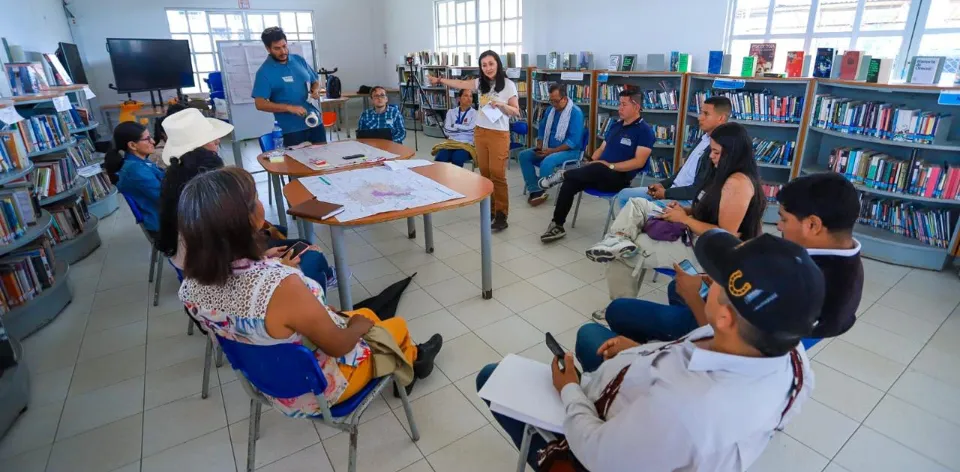 27/6/2024
27/6/2024
UPRA Constructs the Agropecuary Landscapes Catalog of Huila with Producers

The Agropecuary Landscapes Catalog of Huila will be completed by late 2024.
Bogotá D. C., (@UPRAColombia, @claudialili76). With the aim of identifying thematic parameters to describe the structure, function, and significance of eleven agropecuary landscapes identified in Huila, the Agricultural and Rural Planning Unit conducted visits to ten municipalities in the department, where they held discussions and activities with local producers.
Nancy Aguirre, part of the Agropecuary Landscapes group at UPRA, stated that "this catalog is a new tool proposed by the entity to participatively, together with communities and other local actors, identify, locate, characterize, and assess agropecuary landscapes."
This instrument is a pilot developed in collaboration with local producers, municipal governments, and the Government of Huila, with the purpose of guiding territorial planning and organization, as well as agricultural sector policies.
Aipe, Villavieja, Santa María, Algeciras, Pitalito, San Agustín, Isnos, Suaza, Tarqui, and Rivera were the ten municipalities in Huila visited by UPRA's technical team. There, producers emphasized the importance of the landscapes in their territories.
Consuelo Meneses Hernández, a producer from San Agustín (Huila), commented: "At Finca San José, we produce coffee on a small scale. We have fruit trees like mandarin orange, caimo, chachafruto, lemon, and vegetables. We also have an organic home garden with products such as cilantro, onion, tomato, carrot, broccoli, lettuce, and herbs..."
Leiber Noguera, a producer from Isnos (Huila), also participated: "In our farm, we manage an agroforestry system with trees like Guayacán flor amarilla, gualanday, and okobo. In the agroforestry area, we grow coffee varieties like geisha and Borbón rosado. Additionally, our municipality of Isnos is known for panela production, so along the road, you can find the cane varieties that indigenous people used in the past."
Javier Gómez, a coffee producer in Pitalito (Huila), highlighted: "Our coffee landscape is very important because it represents the relationship between people and their environment, and it's the beauty that identifies us, both locals and visitors. I invite everyone to conserve it, to always keep these traditions in mind, not to let them fade away; but also, I invite you to continue building upon this landscape."
Finally, the Agricultural and Rural Planning Unit and the various stakeholders are progressing in this work so that the catalog of agropecuary landscapes in this department is completed by late 2024.

